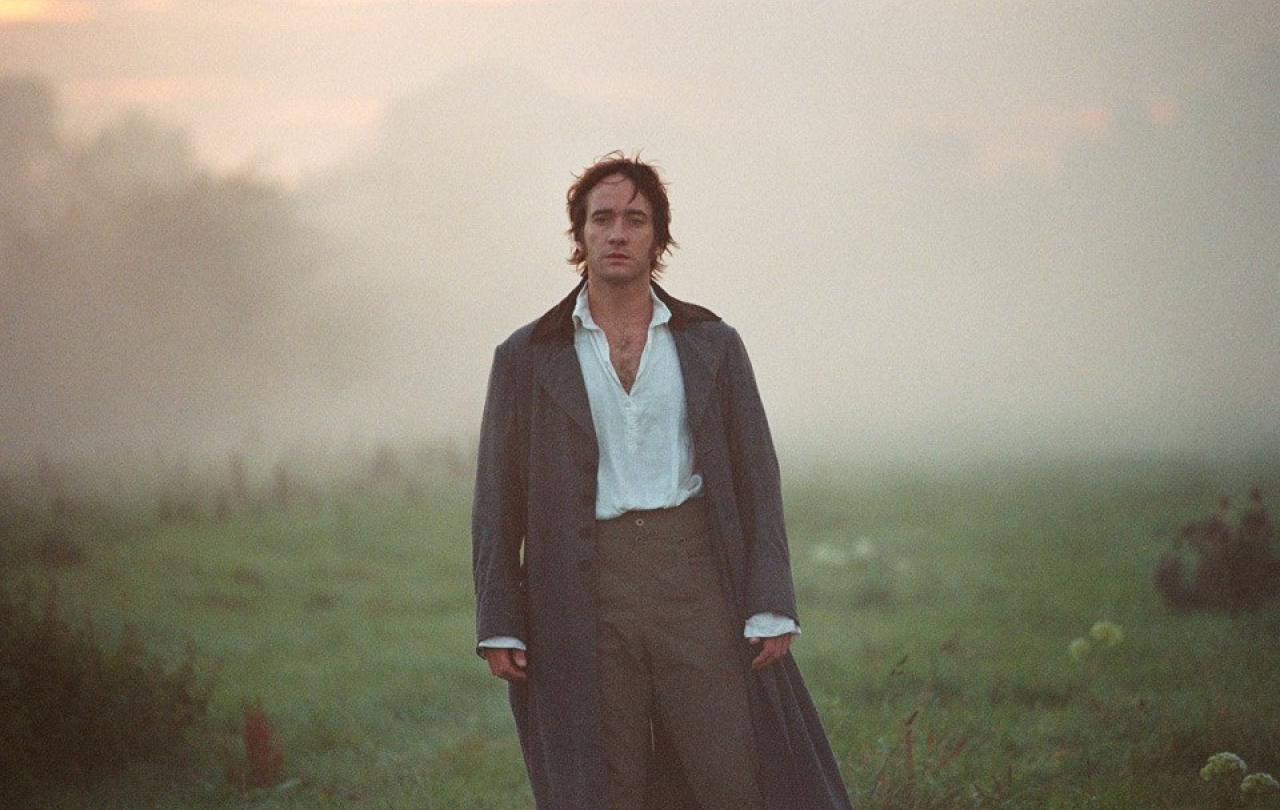
For as long as I can remember, I’ve been interested in how Jane Austen thinks about morality, and how she uses the characters in her novels to explore ideas about what it means to be ethical or virtuous.
‘Virtue’, a word not particularly popular in our contemporary society, is what all her characters must attain if they are to be happy; but which virtues exactly take priority, is a matter that remains up for debate.
When I first read British philosopher Gilbert Ryle’s piece on Austen, ‘Jane Austen and the Moralists’, I began to seriously question whether her heroes and heroines exhibit virtues which are more distinctly secular or Christian. Ryle argues that Austen’s virtue ethics follows the Aristotelian tradition. For Aristotle, virtue consists in finding the golden mean between a lack of a quality, and an excess of it. For example, courage is the virtue in-between cowardice, which is a lack of courage, and rashness, an excess of courage.
Similarly, Austen’s characters must find a balance, for instance between Elinor’s excessive reserve and Marianne’s excessive feeling in Sense & Sensibility. So far, so good. But Ryle’s take is that, while Austen was most likely ‘genuinely pious’ in her own life – especially as the ‘dutiful daughter of a clergyman’ – her ethics remain essentially ‘secular’, rather than presenting an evolved, Christianised version of Aristotle’s virtue ethics. Ryle notes that Austen’s heroines and heroes are rarely seen discussing religion or praying, and thus leaves the question at that.
The more I thought of Ryle’s explanation, the less convinced I was by it. So, I started wondering, can we really think of Mr. Darcy, the most beloved of Austen’s male protagonists, as an essentially pagan hero? Or, in contrast to that, can his narrative arch better be compared to Dante’s spiritual pilgrimage in the Divine Comedy?
He is magnanimous, – that is, neither too vain nor too timid – generous without being excessively so, and careful in all his actions.
Let’s test these two possibilities by looking at which virtues Mr. Darcy practises and learns in Pride & Prejudice. From the very beginning of the novel, Mr. Darcy acts the part of the ideal Aristotelian hero. He is magnanimous, – that is, neither too vain nor too timid – generous without being excessively so, and careful in all his actions. Rash characters such as Lydia, and occasionally even his own sister Georgiana, are described as acting with ‘imprudence’. On the other hand, Elizabeth Bennet confesses to her sister Jane that she believes Charlotte Lucas, in accepting Mr. Collins’ marriage proposal, has acted with excessive ‘prudence’, which becomes tantamount to ‘selfishness’. Not so for Mr. Darcy, who is prudent in the right way, and to the right extent.
The entire proposal scene is one of the most elegantly crafted clashes of values in fiction.
And then we come to the crux of the problem, that is, pride. While all the qualities I listed above are pagan virtues which Christians have historically had no trouble accepting, pride stands apart as a distinctly pagan virtue. For Aristotle, pride was entirely acceptable. While the excess of pride, hubris, is undesirable, pride is positively laudable when it consists in the acknowledgement of one’s accomplishments. Aristotle believed humility, on the other hand – a key virtue to Christians – to be symptomatic of a deficiency of truthfulness. For the first half of Pride & Prejudice at least, Mr. Darcy is in perfect agreement with Aristotle on these points. While Elizabeth is staying at Netherfield, he remarks that, while vanity is indeed a vice, ‘pride—where there is a real superiority of mind—pride will be always under good regulation’.
Elizabeth’s reaction is telling. Not only does she disagree with Mr. Darcy, in that she lists pride as a weakness of mind, but she responds to his confident assertion by turning away ‘to hide a smile’. Her sarcastic smile is a hint of the reproach that will find its full expression following Mr. Darcy’s first marriage proposal. After insulting her family and reminding her of his superiority of character and station in life, Mr. Darcy is firmly chastised by Elizabeth, who freely admits that his manner has impressed her ‘with the fullest belief of your arrogance, your conceit, and your selfish disdain of the feelings of others’. The entire proposal scene is one of the most elegantly crafted clashes of values in fiction. Here is the hero of the story, perfect in every pagan virtue of character, being confronted by the heroine with the truth that he substantially lacks in the one virtue that would distinguish him as Christian, humility.
I am struck by how much this proposal scene mirrors Dante’s meeting with Beatrice at the very end of Purgatory in the Divine Comedy. Up until this point, Dante has been led through hell and purgatory by Virgil but, lacking the Christian faith, Virgil cannot enter heaven. Although Virgil has been both ‘father’ and ‘mother’ to Dante, who has relied on him unconditionally, by the end of purgatory he must leave Dante’s side and be surpassed by Beatrice. Virgil’s guidance as an impeccable paragon of pagan virtue is simply not sufficient in the final stage of Dante’s spiritual growth. Virgil having silently departed, Dante finally sets eyes on Beatrice, expecting a happy reunion after not seeing her for years following her death. Instead, she is peremptory and unsentimental in her greeting: ‘Look here! For I am Beatrice, I am!’. She is reproaching him for not remaining constant to her memory after her death. Instead of letting his love for her lead him to a greater love of God, she says, Dante allowed himself to become distracted by worthless intellectual pursuits. Dante feels the ‘bitter savor’ of her sternness, but he knows that she is right in chiding his intellectual pride. He confesses his past sins, and only then is he truly prepared to enter heaven.
By the time Darcy proposes a second time, his attitude has changed entirely. He no longer values pride as the chief indicator of virtue.
Now, if Pride & Prejudice ended with the proposal scene I described, Gilbert Ryle would be correct in suggesting that Austen’s characters, or at least her male protagonist, are virtuous in an essentially secular and pagan way. But this is not the case. Instead, exactly what happens to Dante happens to Mr. Darcy. Like Beatrice’s chiding, Beatrice’s refusal and scolding lead Darcy to repent and learn humility. By the time Darcy proposes a second time, his attitude has changed entirely. He no longer values pride as the chief indicator of virtue, and thus he has become much more explicitly Christian in his way of exercising virtue. After Elizabeth has accepted his marriage proposal, he confesses to her:
I have been a selfish being all my life, in practice, though not in principle. As a child I was taught what was right, but I was not taught to correct my temper. I was given good principles, but left to follow them in pride and conceit… I was spoiled by my parents, who, though good themselves…allowed, encouraged, almost taught me to be selfish and overbearing… to think meanly of their sense and worth compared with my own. Such I was… and such I might still have been but for you, dearest, loveliest Elizabeth! What do I not owe you! You taught me a lesson, hard indeed at first, but most advantageous. By you, I was properly humbled.
Just as Dante was reminded that he must confess and repent of past pride by Beatrice, so Mr. Darcy is ‘properly humbled’ by Elizabeth. Humility thus becomes central to the resolution of Pride & Prejudice, for without it there could have been no reconciliation between hero and heroine, no marriage at the end. Although Mr. Darcy may not be seen kneeling to pray, or declaring his love of God, the deepening of his virtues as a Christian is what ensures the forgiveness of the woman he loves. He may be the perfect pagan hero when the novel begins, but by the end he becomes the Christian hero we all know and love.





